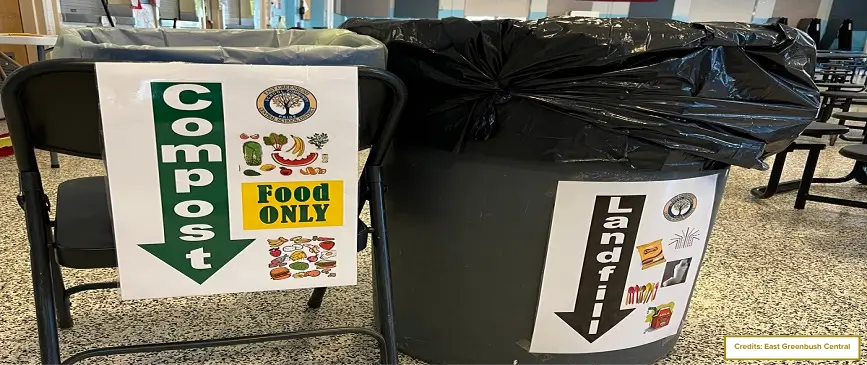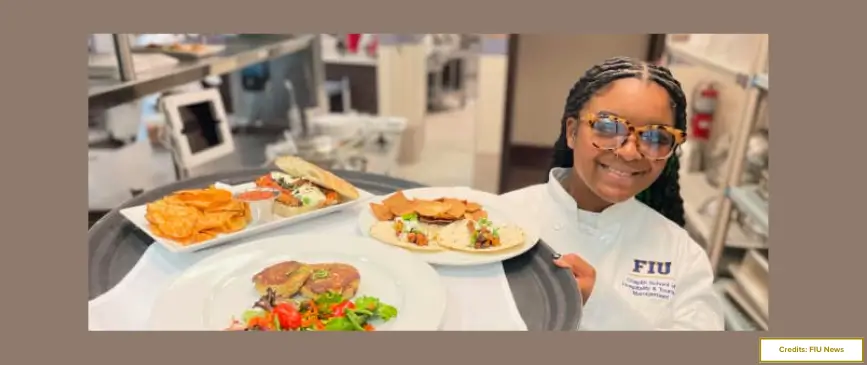Introduction to Shared Tables in School Cafeteria
Have you ever wondered how schools can solve the leftover food problem while ensuring no student goes hungry?
The answer lies in SHARED TABLES, a simple yet transformative idea that blends community values with practical solutions.
If the term seems new to you or even if you are familiar with it, this guide is a bonus for learning all about shared tables.
This guide will help you create a thriving, sustainable program whether you’re designing a modern school cafeteria, setting up a high school cafeteria, or considering options for outdoor cafeterias.
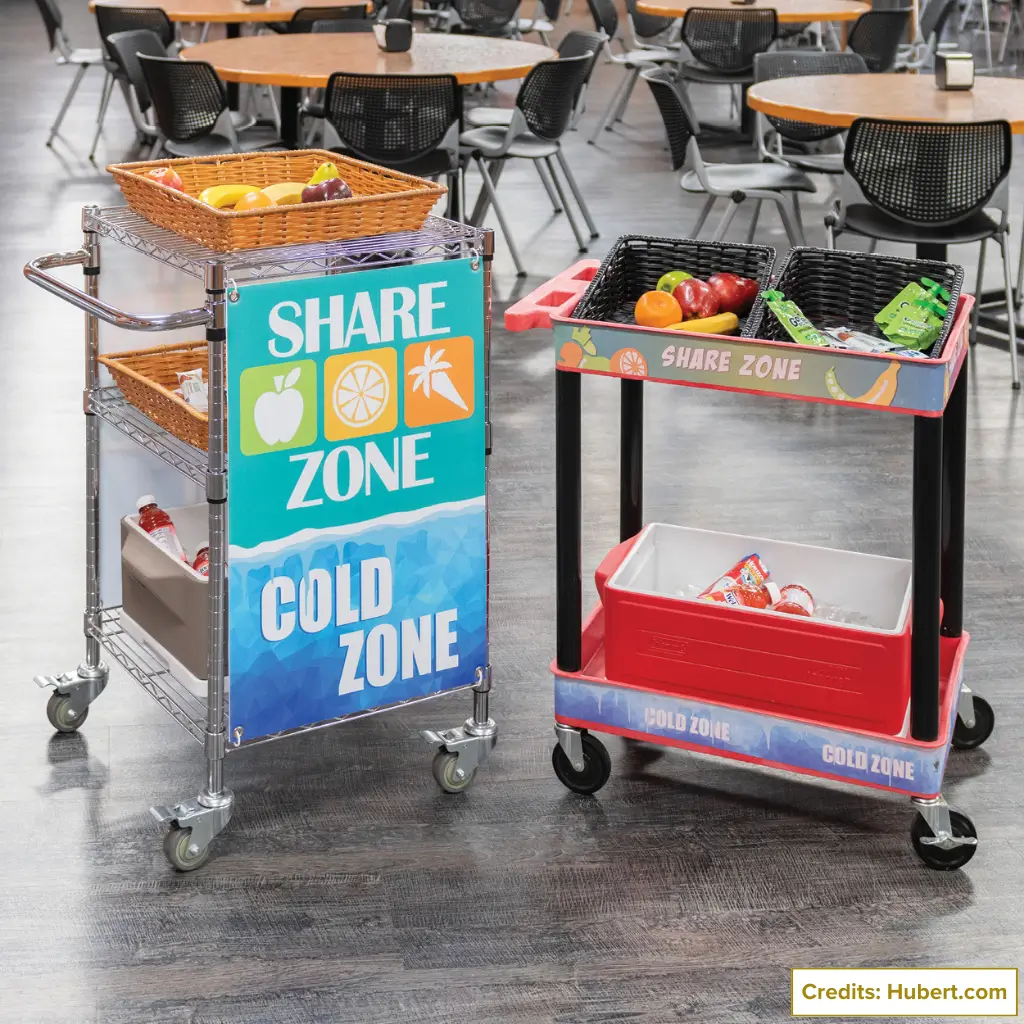
What is a Shared Table and How does it Work?
Shared tables, also called “sharing tables,” are a fantastic initiative introduced in many school cafeteria health programs. The concept is as straightforward as it sounds. Students place their unwanted food (think unopened milk cartons or whole fruits) or drinks on a designated table during lunch. These items are then available for other students who might need or want them.
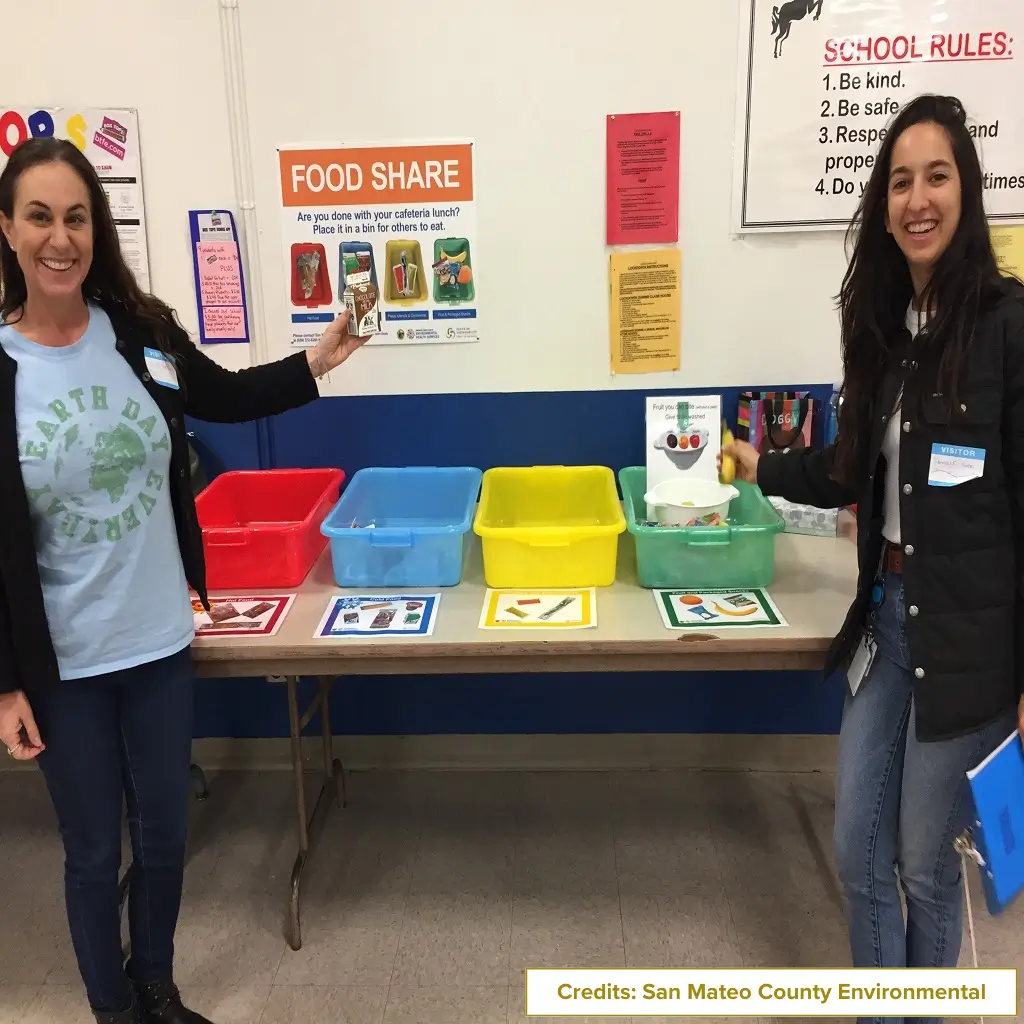
More to this, shared tables are more than just a space to drop off food. They’re an initiative backed by the USDA that aims to reduce food waste and ensure that food is redistributed to those who could benefit the most.
Here’s how shared tables work:
- Designated Area: A table, cart, or tub is marked as the “share table.”
- Acceptable Items: Only pre-packaged, unopened items like milk cartons, sealed snacks, and whole fruits are permitted.
- Student Participation: Students can place unwanted items on the table instead of discarding them.
- Redistribution: Other students may freely take items from the table if hungry.
- Remaining Items: Leftover items can be donated or repurposed, depending on local regulations.
What Can and Cannot be Served at Shared Tables?
The success of shared tables relies on following clear guidelines about what items are acceptable. Schools must ensure these rules are consistently applied to maintain safety and hygiene. Here is a quick rundown of acceptable and non-acceptable items.
What is Allowed?
- Whole fruits with inedible peels (e.g., bananas, oranges).
- Whole fruits with edible skins (e.g., apples, peaches).
- Packaged non-perishable snacks (e.g., granola bars, cereal packs).
- Packaged cold items (e.g., milk cartons, sealed yogurt cups).
- Packaged hot items (e.g., grilled cheese sandwiches).
What is Not Allowed?
- Opened or partially consumed foods.
- Items in resealable packaging.
- Foods are served directly on trays.
- Items brought from home.
These guidelines ensure the safety of students while keeping the shared table effective and functional.
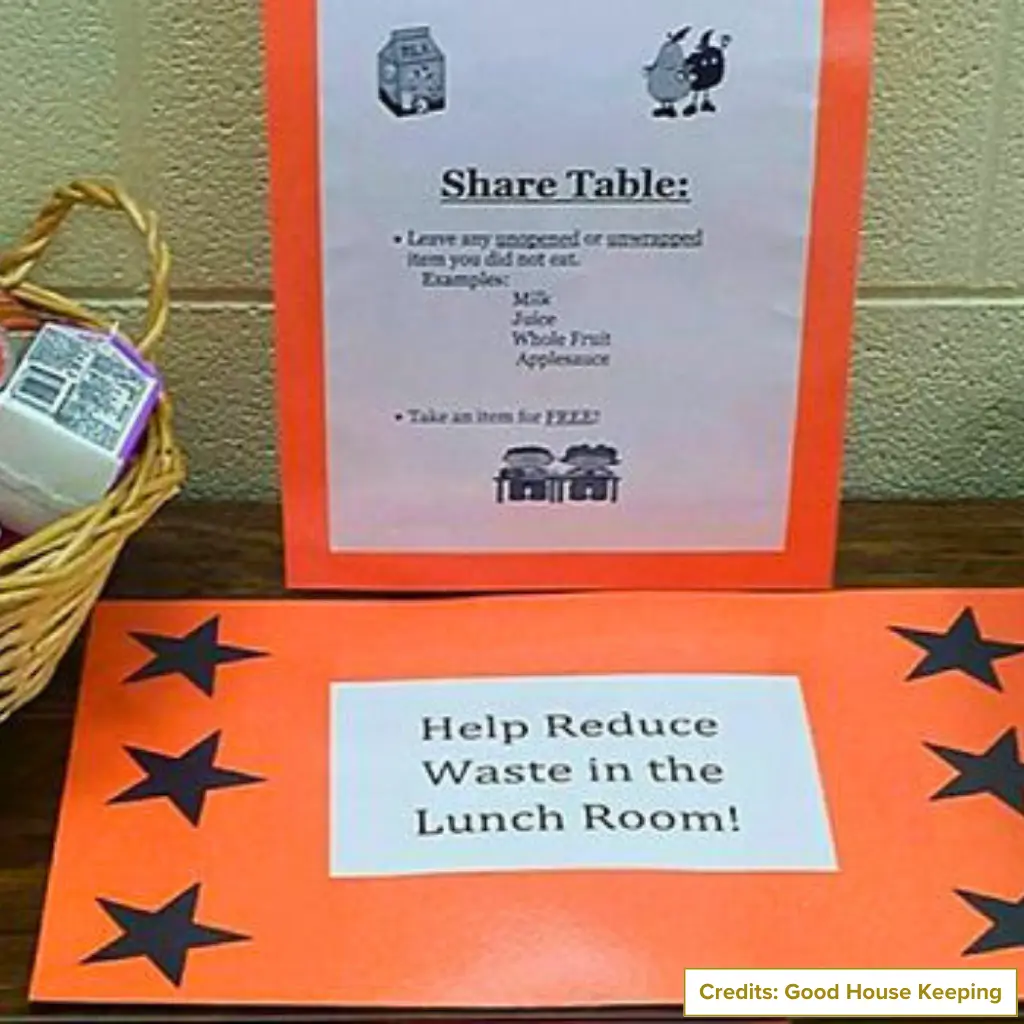
Regulations and Food Safety Guidelines for Shared Tables
While shared tables are an excellent idea, they come with responsibilities. Schools must comply with federal, state, and local regulations to protect student health. Here are some essential considerations:
- Federal Guidelines:
The USDA supports shared tables as part of the National School Lunch Program, promoting food access and reducing waste. Schools participating in the program are encouraged to use shared tables, provided they comply with local health codes, proper sanitation, and food safety regulations. - State and Local Codes:
Health codes vary by state and locality. Schools should consult local health departments to ensure compliance. For instance, perishable items must be stored at or below 41°F using temperature-controlled bins or refrigeration. All reused items must be labeled and kept separate from freshly prepared items. - Allergy Management:
To avoid risks associated with big food allergens, shared table items must be clearly labeled, and cross-contamination should be avoided. - Staff Training:
School cafeteria workers are crucial in monitoring the table, inspecting items for damage, and ensuring proper storage temperatures.
Following these steps, schools can create a safe and sustainable shared table system.
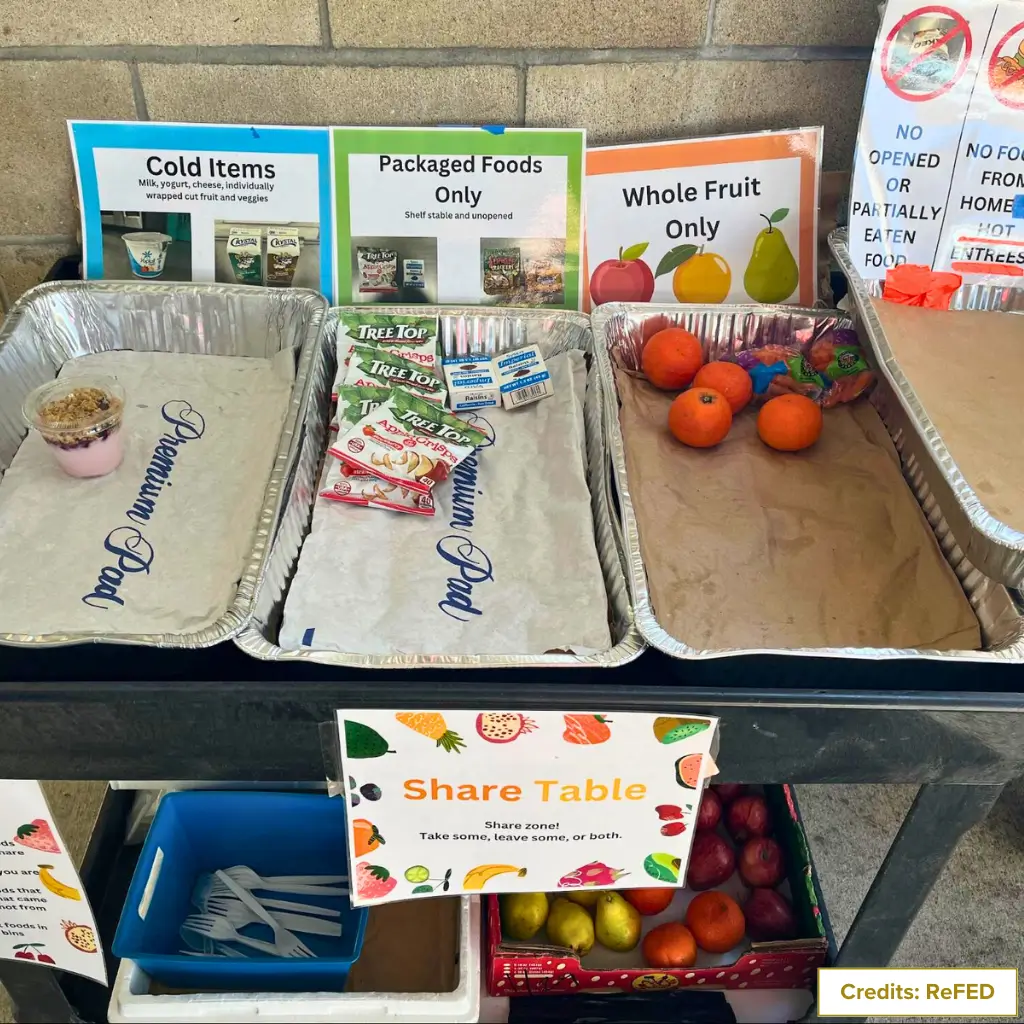
Benefits of Shared Tables in School Cafeterias
Shared tables offer numerous advantages for students, schools, and the environment. Here are some of these:
- Encouraging Generosity: Students learn to share resources, reinforcing values like kindness and respect.
- Reducing Waste: Less food in the trash equals fewer trips to the dumpster and a smaller environmental footprint.
- Supporting Hungry Students: Those in need can access extra food without feeling singled out.
- Saving Money: Schools participating in the NSLP maximize their budgets by reusing eligible items.
- Promoting Healthy Eating: Students can pick up nutritious options like fruits and yogurt from the shared table.
- Reducing Trash Management Costs: Less food waste means fewer trips to the dumpster, saving custodial time and effort.
- Teaching Healthy Habits: These tables promote awareness about healthy eating and sharing resources.
Over time, these tables help students and teach valuable lessons about sustainability and resourcefulness.
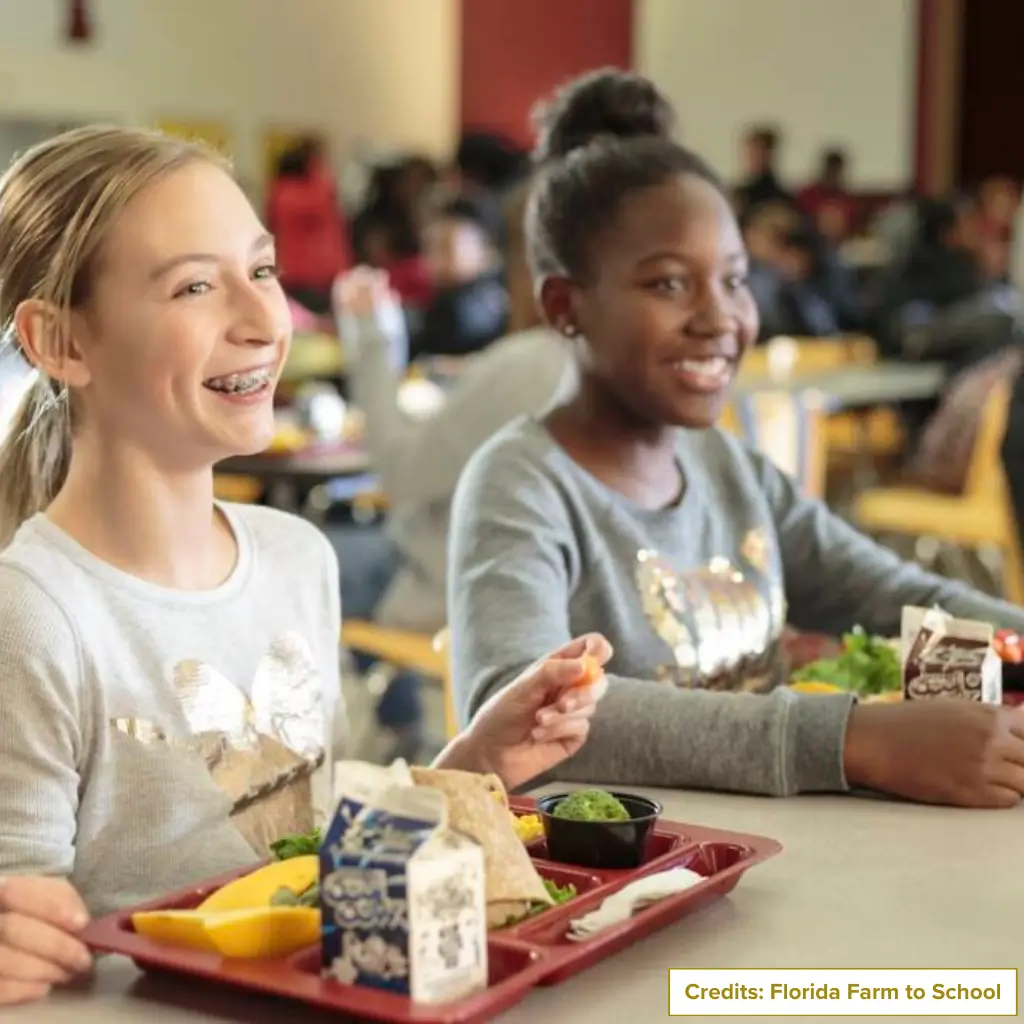
Tips for Successfully Implementing Share Tables
Starting a shared table program requires careful planning and collaboration. Here are some tips to ensure success:
- Create a Share Table Team
Form a team of key stakeholders, including cafeteria staff, teachers, students, and parents. Meet regularly to discuss implementation and address challenges.
- Communicate Program Details
Inform students, parents, and staff about the shared table program through newsletters, emails, and school cafeteria bulletin boards. Clear communication ensures everyone understands the purpose and rules.
- Set Up Properly
Place the table in a visible, easily accessible location. Likewise, use transparent containers or bins for better visibility and include refrigeration for perishable items like milk and cheese.
- Designate a Monitor
Assign staff to oversee the shared table ensuring that only approved items are placed and contamination risks are minimized.
- Track Success
Use a food recovery log to document leftover items and assess the program’s impact. To maintain enthusiasm, share these results with the school community.
- Gain Support
Present the idea to administrators, staff, and parents, highlighting benefits like waste reduction and improved student well-being. Collaborate with local health authorities to establish safety protocols.
10 Great Shared Table School Cafeteria Ideas
Want to take your shared table to the next level? Here are some innovative ideas to inspire:
- Healthy Snack Zone: Highlight nutritious options like fruits and granola bars.
- Theme Days: Host events like “Fruit Fridays” to encourage participation.
- Donation Partnerships: Collaborate with local food banks to donate surplus items.
- Refrigerated Compartments: Keep perishable items fresh and safe with a small fridge.
- Student Ambassadors: Empower students to oversee and promote the program.
- Recipe Cards: Provide creative ideas for using shared items, like smoothies or parfaits.
- Art Projects: Use food packaging for eco-friendly crafts, promoting sustainability.
- Food Tracking Chart: Display saved food amounts to motivate students.
- Feedback Box: Let students share suggestions for improving the table.
- Incentive Program: Reward classes that actively reduce waste.
These ideas make the shared table more engaging and impactful for everyone involved.
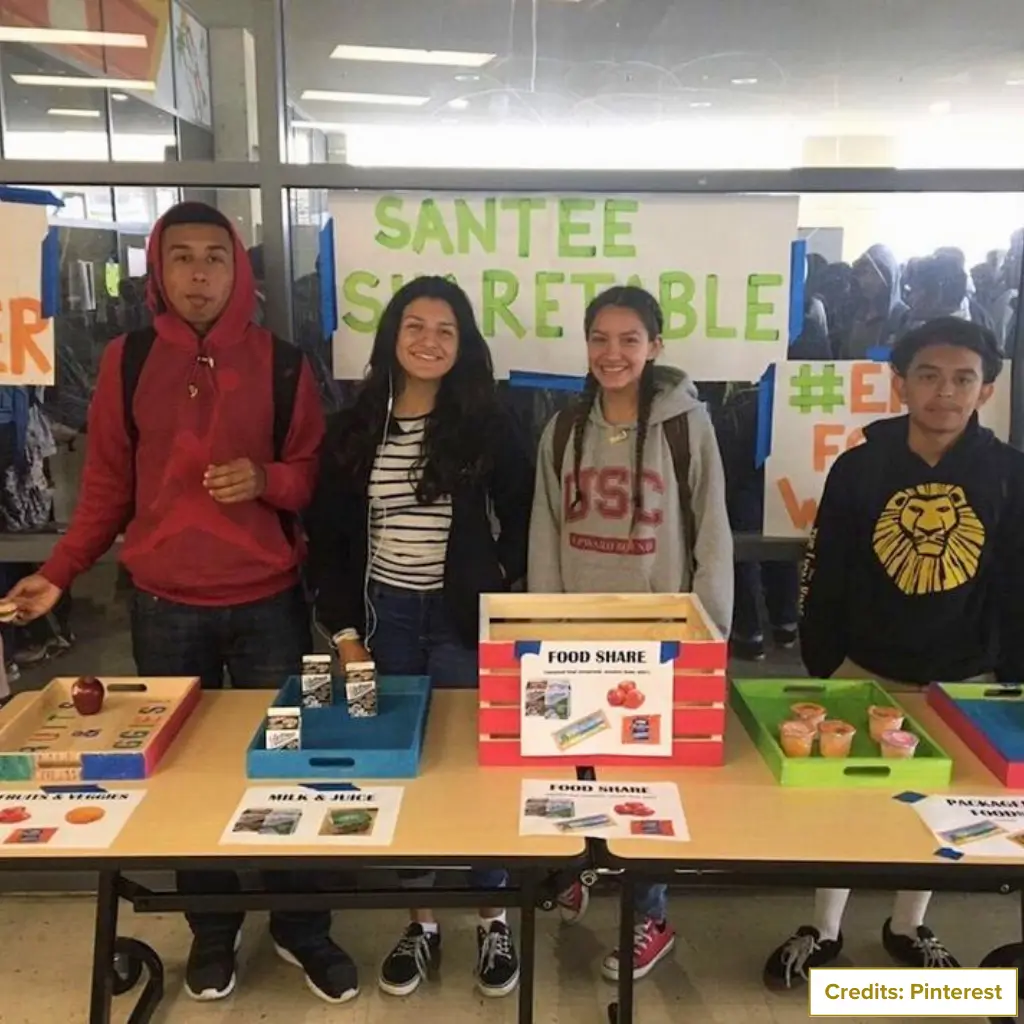
Outdoor Cafeterias and Shared Tables
Shared tables aren’t limited to indoor cafeterias. In outdoor cafeterias, they can be just as effective, provided proper measures are in place. Use durable, weather-resistant tables and ensure items are stored safely to prevent spoilage or contamination. With a little planning shared tables can enhance outdoor dining spaces, offering students fresh air and nutrition in one package.
Conclusion
Shared tables are more than just a way to improve school cafeteria food. They represent a movement toward sustainability, community support, and healthy school cafeteria practices. Whether in an elementary school cafeteria or a thoughtfully designed middle school cafeteria designing project, shared tables can transform the way schools approach food service. By adopting this initiative, schools can foster a culture of sharing, reduce waste, and ensure every student has access to the nourishment they need.
FAQs
Are shared tables allowed in all schools?
Yes, as long as they comply with USDA and local food safety regulations.
Can home-packed food be placed on the table?
No, only food provided by the cafeteria is allowed.
How can schools ensure food safety at shared tables?
By training staff, monitoring temperatures, and following local health codes.

